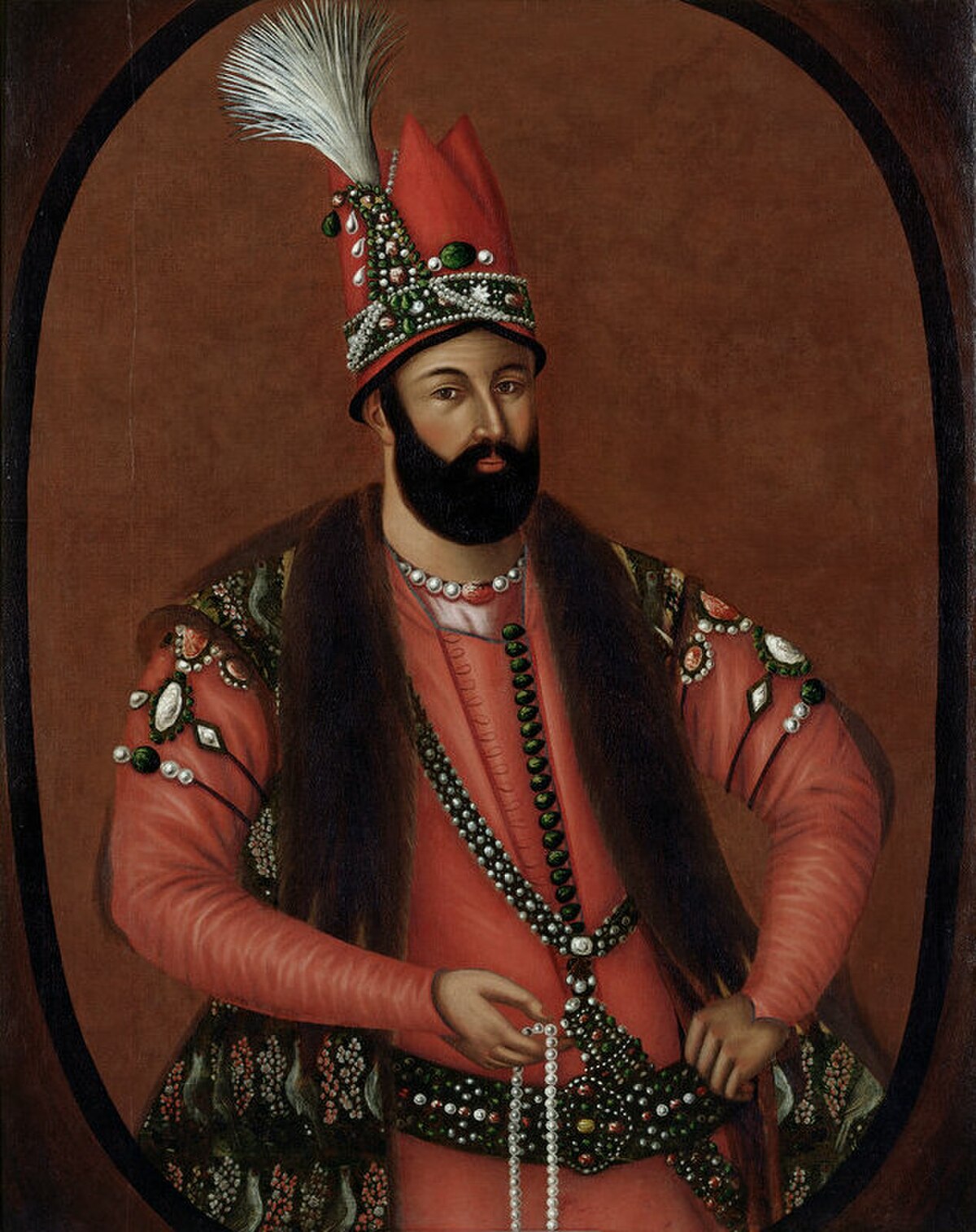
Persia under Nader Shah
IranIran's territorial integrity was restored by Nader Shah, a native Iranian Turkic warlord from Khorasan. He rose to prominence by defeating the Afghans, pushing back the Ottomans, reinstating the Safavids, and negotiating the withdrawal of Russian forces from Iranian Caucasian territories through the Treaty of Resht and Treaty of Ganja. By 1736, Nader Shah had become powerful enough to depose the Safavids and declare himself shah. His empire, one of the last great conquests of Asia, was briefly among the world's most powerful.
To finance his wars against the Ottoman Empire, Nader Shah targeted the wealthy but vulnerable Mughal Empire to the east. In 1739, with his loyal Caucasian subjects, including Erekle II, Nader Shah invaded Mughal India. He achieved a remarkable victory by defeating a larger Mughal army in less than three hours. Following this triumph, he sacked and looted Delhi, acquiring immense wealth that he brought back to Persia.[48] He also subjugated the Uzbek khanates and reinstated Persian rule over vast regions, including the entire Caucasus, Bahrain, and parts of Anatolia and Mesopotamia. However, his defeat in Dagestan, marked by guerrilla warfare and a significant military loss, signaled a turning point in his career. Nader's later years were marked by growing paranoia, cruelty, and the eventual provocation of revolts, leading to his assassination in 1747.[49]
Following Nader's death, Iran plunged into anarchy as various military commanders vied for control. The Afsharids, Nader's dynasty, were soon confined to Khorasan. The Caucasian territories fragmented into various khanates, and the Ottomans, Omanis, and Uzbeks regained lost territories. Ahmad Shah Durrani, a former officer of Nader, founded what became modern Afghanistan.
Georgian rulers Erekle II and Teimuraz II, appointed by Nader, capitalized on the instability, declaring de facto independence and unifying eastern Georgia.[50] This period also saw the rise of the Zand dynasty under Karim Khan,[51] who established a realm of relative stability in Iran and parts of the Caucasus. However, following Karim Khan's death in 1779, Iran descended into another civil war, leading to the rise of the Qajar dynasty. During this period, Iran permanently lost Basra to the Ottomans and Bahrain to the Al Khalifa family after the Bani Utbah invasion in 1783.[52]
